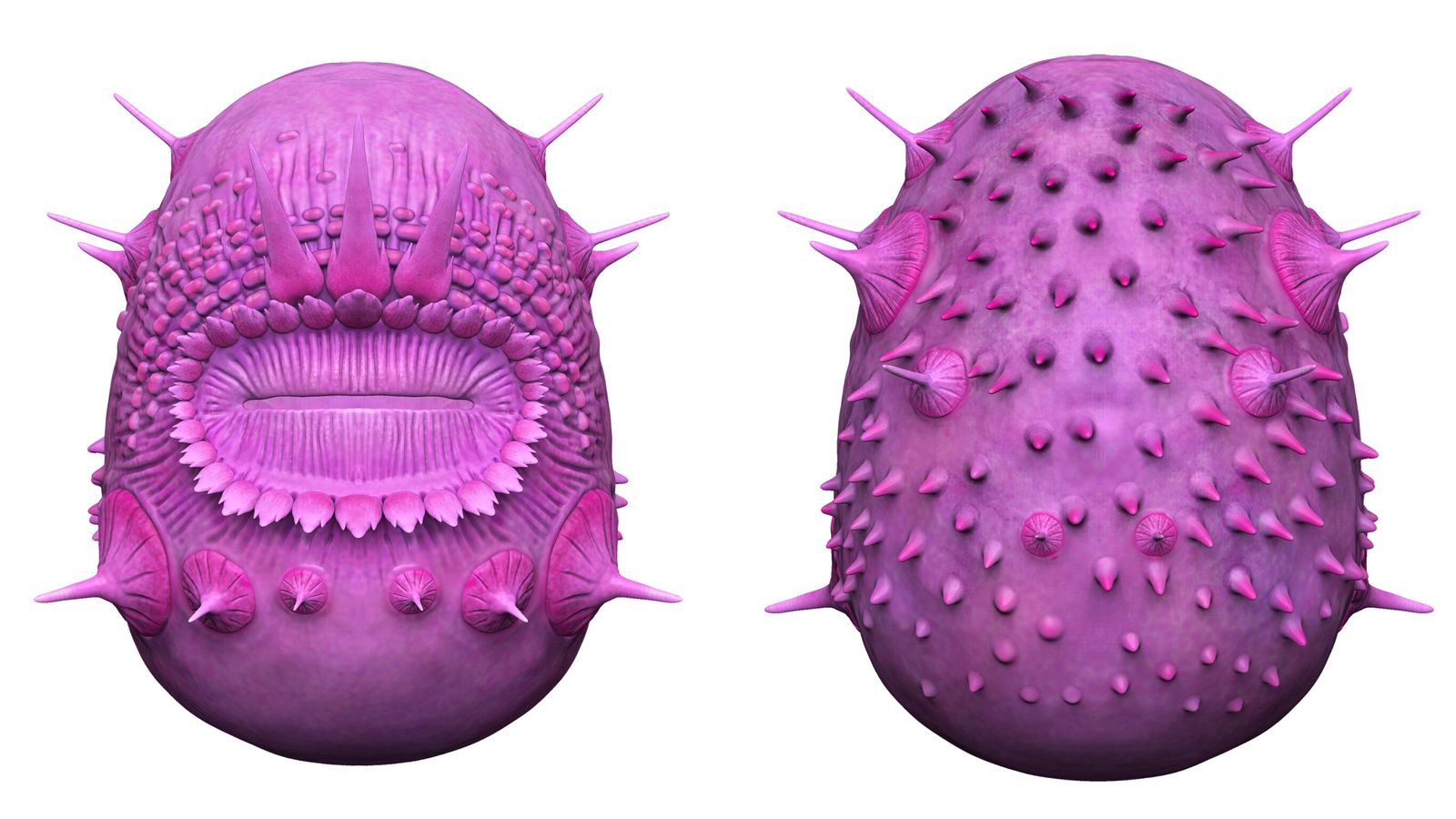A “wrinkly” creature with no anus that was thought to be an ancient human ancestor is in fact not, scientists have found.
The microscopic creature has been described by researchers at the University of Bristol as “a spiky, wrinkly sack” and is named Saccorhytus, from the Latin and Ancient Greek meaning “wrinkly bag”.
It has a big mouth surrounded by spines and holes, which scientists initially believed were pores for gills.
These are a feature of deuterostomes, an ancient branch of life that includes vertebrates, such as humans.
But additional analysis of the 500-million-year-old fossils, which were found in China, has found that the holes are not pores but the bases of further spines that broke off during the fossilisation process.
“Some of the fossils are so perfectly preserved that they look almost alive,” said Professor Yunhuan Liu, at Chang’an University in China.
“Saccorhytus was a curious beast with a mouth but no anus, and rings of complex spines around its mouth.”
Most people with Omicron didn’t even realise they had COVID-19, study finds
Brexit: EU must end ‘persistent delays’ in giving UK access to scientific research programmes, says government
River fish being moved in struggle to survive low water levels
The family tree of the creature, which was about a millimetre in size, has been described in detail in a paper published in the journal Nature.
To examine its ancestry, the researchers took hundreds of X-ray images at different angles using a type of particle accelerator to investigate its internal and external features.
These images were analysed with powerful computers and the researchers were able to create a detailed digital 3D model.
Emily Carlisle, from the University of Bristol, said: “Fossils can be quite difficult to interpret and Saccorhytus is no exception.”
The digital models revealed how the pores around the creature’s mouth were closed by another body layer extending through, creating the spines.
“We believe these would have helped Saccorhytus capture and process its prey,” said Huaqiao Zhang, from the Nanjing Institute of Geology and Palaeontology.
The researchers now believe that Saccorhytus was actually an ecdysozoa – not a deuterostome – a group of life that includes arthropods and nematodes.
One of the most baffling aspects of the creature is its lack of anus, as it calls into question how the creature could expel digestive waste – perhaps “out of the mouth, rather undesirably”, the researchers say.
“This is a really unexpected result because the arthropod group have a through-gut, extending from mouth to anus,” said Shuhai Xiao, from Virginia Tech.
That the anus is missing “indicates that it has regressed in evolutionary terms, dispensing with the anus its ancestors would have inherited”, he said.
“We still don’t know the precise position of Saccorhytus within the tree of life, but it may reflect the ancestral condition from which all members of this diverse group evolved.”









